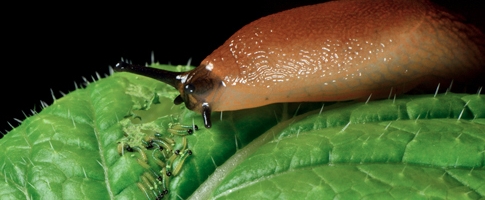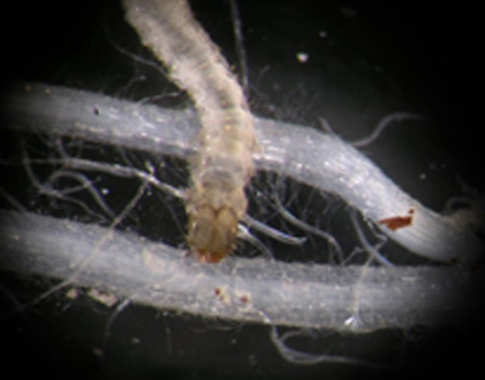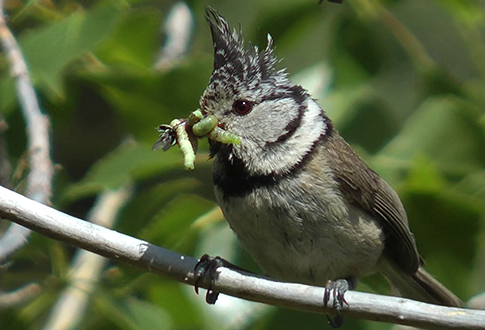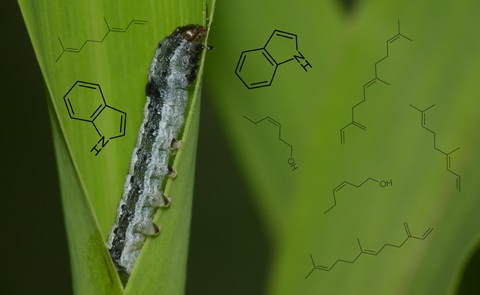News archive
19 May 2016
PhD Positions in Chemical Ecology/ Natural Products Chemistry
The newly established Laboratory for Bioanalytical Chemistry at the University of Neuchâtel is looking for highly motivated candidates for several PhD projects. The projects are part of ongoing research into chemical communication and secondary metabolism of nematodes and involve:
- The development of MS-based screens for nematode pheromone analysis.
- The comparative analysis of nematode pheromones.
- The isolation, structure elucidation and total synthesis of nematode derived small molecule signals.
- Their functional characterization in intra- and interspecies as well as cross-kingdom interactions.
1 April 2016
New SNSF projet on the interactions among gastropodes, insects and plants
The FARCE group was awarded a new research project by the Swiss National Science Foundation. The study was conceived in close collaboration with Gaylord Desurmont, the post-doctoral fellow the InvaVOL project that came to terms in 2015. Results obtained with slugs in this project inspired the new project, which will be carried out by a PhD student and a post-doctoral researcher.

22 February 2016
Renewed website
The website of C3E has been restructured and renewed to match those of the other Centres of Competence in style and format.
16 November 2015
A host of new projects of C3E participants in 2015
The new grant that was recently awarded to Betty Benrey by the SNSF to study apparent competition is the last in a long row of new research projects with a link to chemical ecology that were launched and/or granted in 2015. These new studies listed below are portrayed in the C3E Newsletter 2-2015 and in the research section of this website.
- Agricultural practices and the cascading effects of apparent competition: A case study of trophic interactions on cultivated maize and wild lima bean plants (Betty Benrey, evolutionary entomology)
- Alginate beads as vehicles for the application of entomopathogenic nematodes and bacteria against economically important soil-dwelling pests (Ted Turlings, FARCE)
- Sugar wars: glucose-mediated activation, neutralization and re-activation of defensive metabolites in a soil tritrophic system (Felix Kessler, plant physiology & Ted Turlings, FARCE)
- Beta-aminobutyric acid (BABA) as a plant-produced priming agent: Biosynthesis, regulation and perception (Brigitte Mauch-Mani, molecular and cell biology)
- Impact of neonicotinoids on two species of sparrows - Links with agricultural practices, bird health and male fertility (Fabrice Helfenstein, evolutionary ecophysiology)
- Attracting bodyguards: testing macro-evolutionary trends of belowground plant indirect defenses and effects on plant fitness (Sergio Rasmann, functional ecology)
- New ecological and sustainable solution for protecting architectural metals using an ecologically friendly biological treatment (Pilar Junier & Edith Joseph, microbiology)
- Exploring the chloroplast ABC1-like kinase phosphoprotein network: roles in remodeling thylakoid lipid composition, photosynthesis and beyond (Felix Kessler, plant physiology)
20 May 2015
Plant bodyguards: understanding belowground plant indirect defenses

The world of butterflies in short films and 3D animations
 Crested tit bringing caterpillar to nestlings
Crested tit bringing caterpillar to nestlings
The science communication project (Agora – taking research to the public) of Ted Turlings and Patrick Guerin is meant to strengthen the existing connection between C3E UniNE and the Papiliorama Foundation and has been launched in April with a kick-off meeting in Kerzers. Within the framework of a new exposition to be established at the entrance of the butterfly dome, the researchers intend to communicate fascinating results of their studies on butterflies to the broad public. They will concentrate on little known, hidden or even invisible aspects of the butterfly biology, with a focus on the chemical ecology of insect-plant interactions. In close consultation with Caspar Bijleveld, director Papiliorama, and Chantal Derungs, responsible for education, Thomas Degen will create interactive visualizations to present the contents, relying on short video clips and on 3D animations for phenomena that cannot be filmed.
Link to the project description
16 February 2015
Indole as the key signal for communication between and within maize plants

A project from the FARCE group has revealed the key communication signal in maize. The project was launched by Matthias Erb (now at the University of Bern) when he supervised the thesis work of PhD student Nathalie Veyrat.
Published in Nature Communications the study shows that the aromatic compound indole is an essential airborne signal that is emitted by maize leaves to inform each other that they are under attack. Leaves that are being eaten by caterpillars release indole and thereby alert other leaves and neighbouring plants, which then can prepare a chemical defence against the caterpillars. The ultimate evidence that indole is essential for this form of communication was obtained with plants that have a mutation that prevents them from synthesizing indole. Leaves from these “mute” plants were not able to communicate the danger alert.
Link to the article Nature Communications
28 October 2014
Dr. Betty Benrey published this month a review on the Annual Review of Entomology, entitled "Crop Domestication and Its Impact on Naturally Selected Trophic Interactions".
24 October 2014
Prof. Brigitte Mauch-Mani has been promoted "highly cited researcher" and member of the "world's most important scientific minds" by Thomson Reuters. Of the 3215 researchers named this year worldwide in plant and animal science, seven were affiliated with Swiss Universities - five in Zürich, one in Basel and one in Neuchâtel.
Congratulations Brigitte!!

